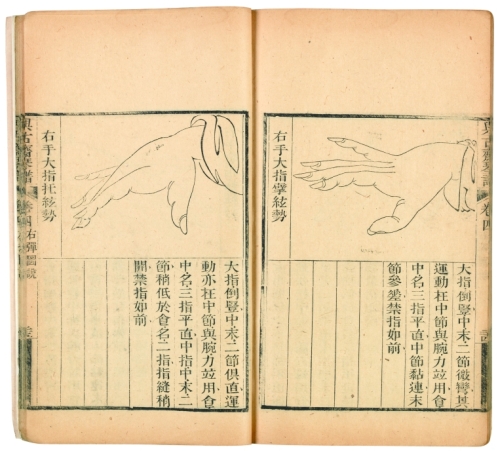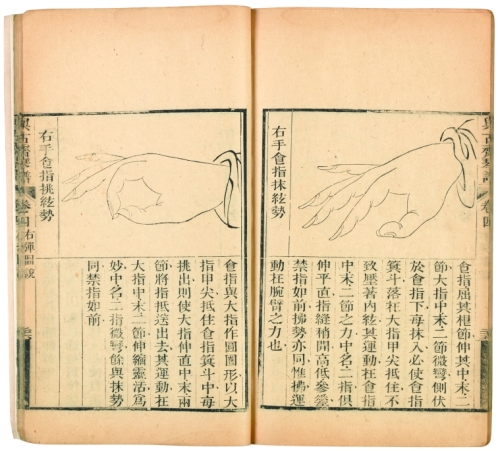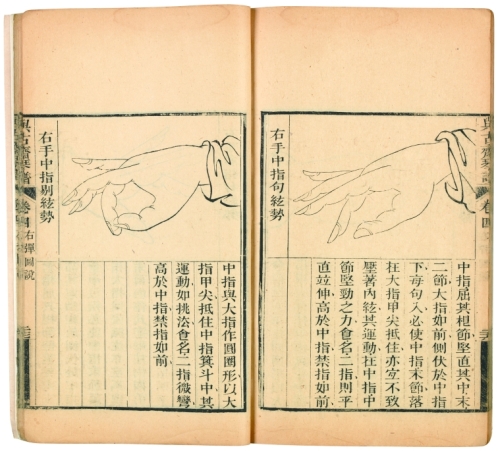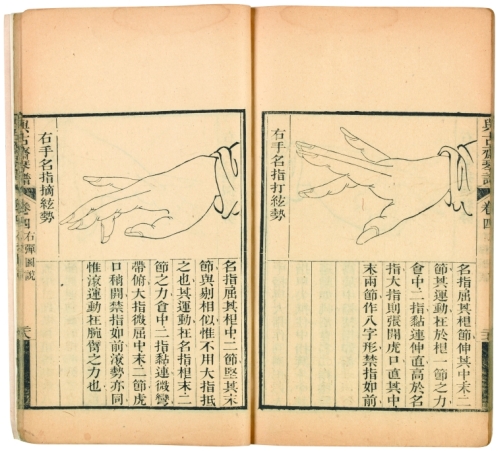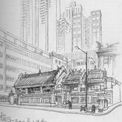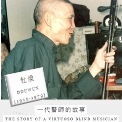 Collections
Collections The Legend of Silk and Wood: A Hong Kong Qin Story
The Legend of Silk and Wood: A Hong Kong Qin Story On the Qin
On the Qin Basic Techniques for Playing the Qin
Basic Techniques for Playing the Qin
Table and stool for playing the qin
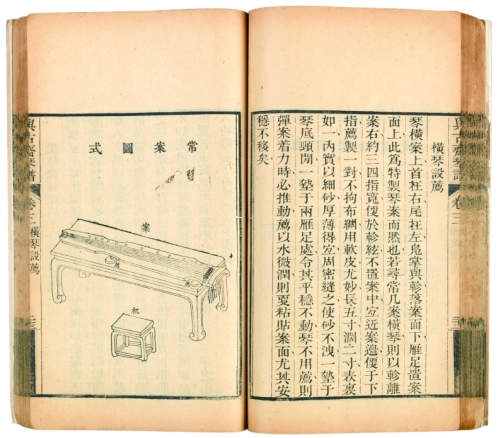
The qin table is usually 65-70 cm tall, or slightly lower than a desk. The qin stool is slightly taller than common stools, which helps the qin player relax his or her arms while playing the instrument.
Sitting posture
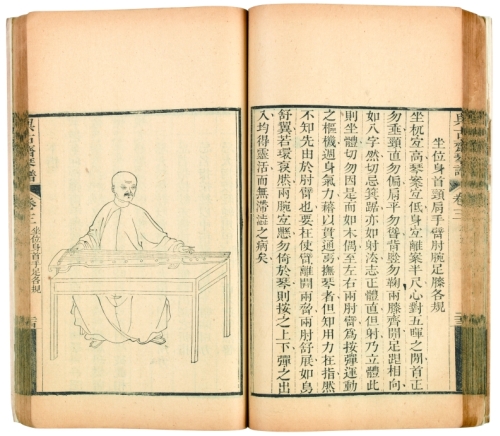
The Yuguzhai Qinpu (Yuguzhai Qin Handbook) (1855) provides a detailed description of the correct sitting posture for playing the qin: keep the head, neck and back upright while maintaining flexibility; “do not sit like a puppet”.
Fingering techniques
Qin playing requires just two hands. The right is used for plucking the strings and the left for pressing on the strings. Only the thumb, index, middle, and ring fingers of both hands are used and the little fingers (pinkies) are known as “the forbidden fingers”, meaning that they are not to be used. The term “fu qin” (touching the qin) was used in ancient times to describe the act of playing the qin, implying that qin playing was regarded as an elegant and tranquil pastime.
Left hand fingering:
After the right hand has plucked a string, the left finger creates different turning sounds from the string’s lingering tones. The combination of plucked notes and lingering tones is a characteristic feature of qin music. The four basic fingering techniques of the left hand include “Yin’’, “Nao’’, “Chuo’’, and “Zhu’’.
Yin: a small-degree vibrato
Nao: a large-degree vibrato with rhythm
Chuo: an upward glissando
Zhu: a downward glissando
Right hand fingering:
There are eight basic techniques for the right hand: “Bo’’, “Tuo’’, “Mo’’, “Tiao’’, “Gou’’, “Ti’’, “Da’’ and “Zhai’’ for the ring finger. As each finger has different natural strengths and there are an unlimited number of angles with which to make contact with the strings, these eight techniques can create a myriad of variations in tonality and timbre.
Present-day understanding of these fingering movements are:
Bo: Thumb plucking inward (toward the player)
Tuo: Thumb plucking outward (away from the player)
Mo: Index finger plucking inward
Tiao: Index finger plucking outward
Gou: Middle finger plucking inward
Ti: Middle finger plucking outward
Da: Ring finger plucking inward
Zhai: Ring finger plucking outward
